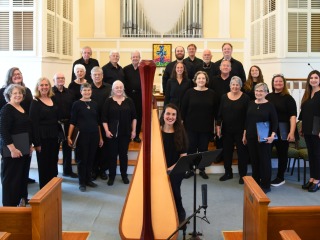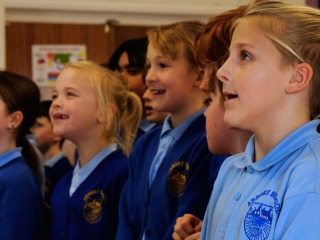MENU
02 Aug 2012
by Tim Price
For the past three years, I have been studying music at Bangor University in North Wales. The course at Bangor enabled me to specialise in Composition, while still giving me the opportunity to work in other areas, such as solo performance on clarinet and various areas of musicology. As well as studying more well known composers like Debussy and Stravinsky, I had the chance to look into the Welsh Composers of the 20th century. Seeing the ways that some of these composers had used influences taken from traditional Welsh music to create new music with a definite Welsh flavor inspired me to start thinking about ways that I could do a similar sort of thing with Manx music. My first chance to try this came when I was planning the programme for my final year recital. I had already decided that I wanted to play something by one of the Welsh composers I had studied in my second year (I ended up choosing Prelude, Arioso and Dance by Mervyn Burtch), and I thought it would be great if I could write a Manx piece to go with it. The result of this was Fantasias on Manx Folk Tunes. My ‘Fantasias on Manx Folk Tunes’ is a three-movement piece, with each movement being based on different folk tunes: Snieu wheeyl snieu, Ushag veg ruy, and the Mheillea. I wanted to do something that would be more than just an arrangement of these tunes, so I decided to try and reinterpret the melodies, taking small fragments from them developing them using some of the techniques I had picked up from studying the composers I have mentioned. I chose these particular melodies because I already knew them from when I was a child. While it might seem like it would be easier to work with melodies I didn't know (as I wouldn't already have ideas of how they should sound), I wanted to use the ideas I had to help me. The starting point in composing this was the second movement, 'Ushag veg ruy'. Once I had worked out a way of getting this movement to work, I was able to move on and use similar techniques in the other two movements. I used various modern types of harmonies, which I'd learned from studying composers like Stravinsky, including chords built with stacked fourths (instead of thirds), bitonality (using two keys at the same time) and even Stravinsky's "majorminor equivocation" (a complicated way of describing a chord with both the major and minor third) at one point in the first movement. This helped to give the piece quite a modern sound, bringing old and new styles together. The piece seems to have been received quite well so far, but I have other ideas on how I can move on from this piece. As well as a couple of ideas I've had for programmatic instrumental pieces based on the history and landscape of the Island, I'd like to look further into Manx music, to see how I could experiment with bringing some of the characteristics and other elements into my own style. I will be returning to Bangor in September to continue my studies with a Masters in Composition.

Paid performance opportunity: ‘Cree’ Manx language and song project
30 Jun 2025
Read More...
This Fair Isle: Manx music arranged by Kevin Kelly
04 Jun 2025
Read More...
School celebrated in new Manx film
04 Jun 2025
Read More...
Contact, Links, Acknowledgements, Privacy
© Culture Vannin. Culture Vannin is the trading name for the Manx Heritage Foundation, registered charity 333 in the Isle of Man. Designed by 3 Legs Ltd.